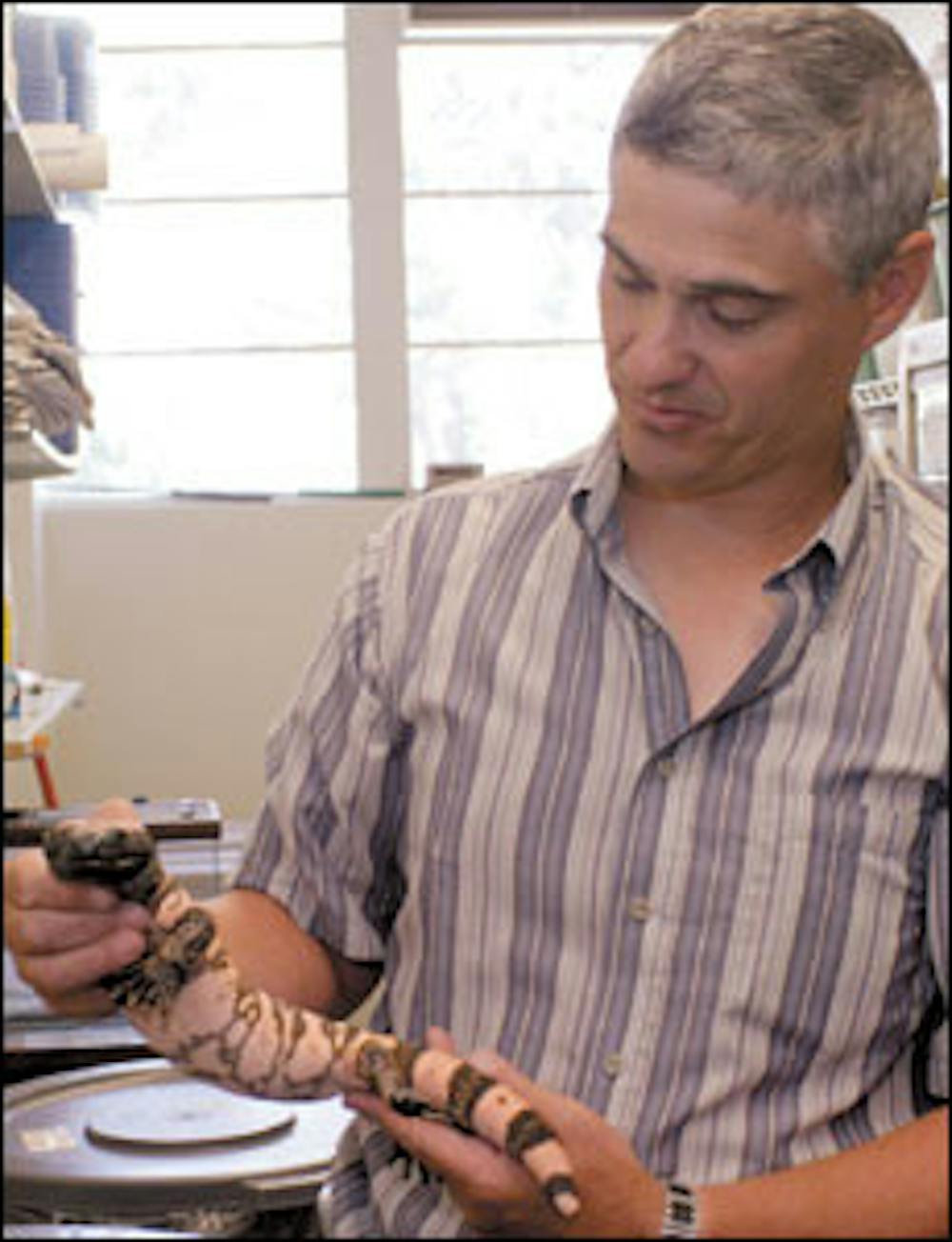ASU scientists are studying the medicinal qualities of a protein produced by Gila monsters, in the hope of helping diabetes patients.
ASU assistant professor Dale DeNardo and graduate student Carolyn Christel are studying a group of 29 of the lizards on campus.
The lizards, infamous for their venomous bite and black and red coloring, produce a peptide known as exendin-4. The University and Amylin Pharmaceuticals, Inc., are working together to better understand it.
Exendin-4 is a protein, but it's not certain if it is a hormone, DeNardo said.
Also, the substance may not come from venom, but from saliva, he said.
The Gila monster's eating pattern -- long fasts and infrequent, but sometimes large, meals -- may be the key to studying the protein.
"They eat as much as they can; it's like having a Thanksgiving feast after a starvation diet," DeNardo said.
Diabetics have to follow strict diets, and take shots and pills, to do what exendin-4 may help the lizards do -- regulate their glucose levels.
"They have been found walking around with blood sugar levels of 25; that would put humans into a coma," he added.
ASU's tests show levels of exendin-4 were very low before Gila monsters ate and very high after a feast.
"Because of their eating patterns, it makes sense for a hormone to help the Gila monsters in their digestion, food absorption and energy management," DeNardo said.
As for humans, a clinical trial at Amylin indicated that exenatide -- synthetic exendin-4 -- stimulates insulin secretion and lowers elevated blood glucose concentrations in people with type 2 diabetes who have fasted overnight.
"What they test for us won't help them get FDA approval, but they are scientists, too, and curious," DeNardo said. "They asked if they could test some extra samples to look for other things."
To find out what triggers the production of exendin-4 in Gila monsters, DeNardo and Christel test the lizards' eating characteristics.
In the experiments, some get to smell food, but not to chew or eat. Some get to chew on a foam stick, but not eat. Some have food injected into their stomachs, bypassing their mouths. And some lizards get to eat normally, DeNardo said.
"It will take a few years, but the goal is to really understand how and why Gila monsters have exendin-4 in their systems," DeNardo said. "The research project is just beginning."
Reach the reporter at bonita.l.kline@asu.edu.




